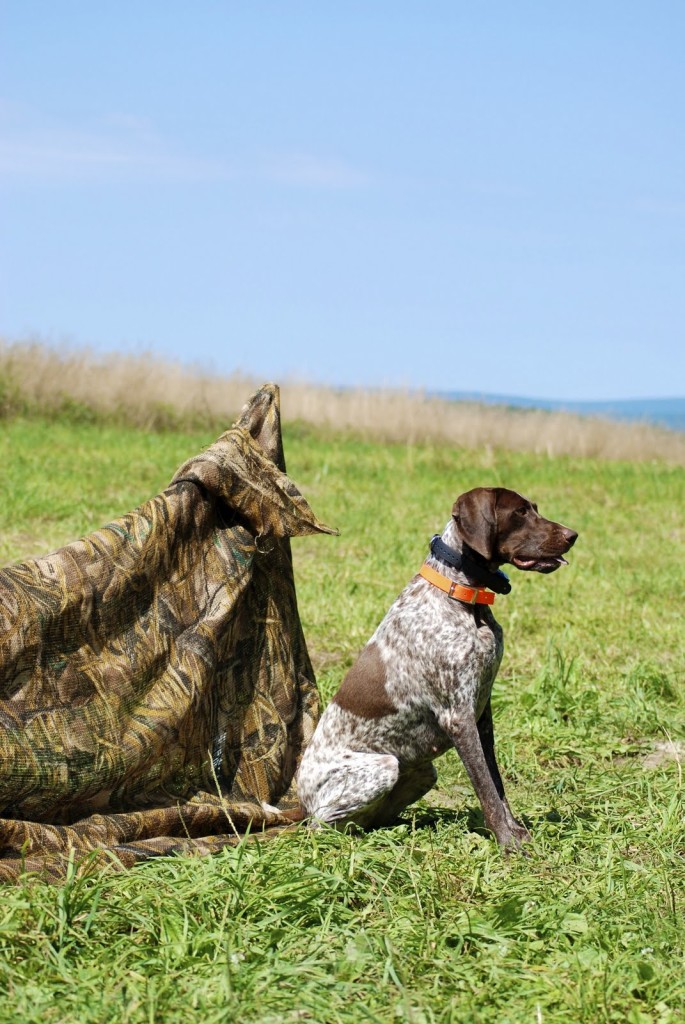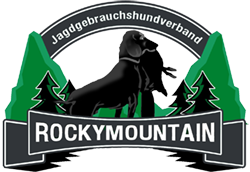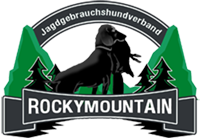The Spring Puppy Test
by Josh Stephens
 As a proud new owner of a German versatile hunting dog I suspect you’ve spent the last several months falling head over heels in love with your new puppy. You’ve spent time getting to know your dog and appreciating the natural instincts of the breed. You may have taken him hunting a few times; somewhere along the line you may have started training him and wondering about the next step. Perhaps you’ve heard about the “VJP,” or the spring puppy test. Your breeder likely mentioned the test and stressed its importance to him and the breed as a whole. If you joined a breed club, then your fellow members are probably encouraging you to test your new pup. There are many reasons to test, as covered in the article here, but if you are wondering just what the heck this test is, and how best to prepare you and your pup for it, keep reading.
As a proud new owner of a German versatile hunting dog I suspect you’ve spent the last several months falling head over heels in love with your new puppy. You’ve spent time getting to know your dog and appreciating the natural instincts of the breed. You may have taken him hunting a few times; somewhere along the line you may have started training him and wondering about the next step. Perhaps you’ve heard about the “VJP,” or the spring puppy test. Your breeder likely mentioned the test and stressed its importance to him and the breed as a whole. If you joined a breed club, then your fellow members are probably encouraging you to test your new pup. There are many reasons to test, as covered in the article here, but if you are wondering just what the heck this test is, and how best to prepare you and your pup for it, keep reading.
The VJP test
The Verbands-Jungend-Prüfung (VJP) is the first breed test that your new dog will run in. It’s intended to evaluate the natural abilities of pups less than fifteen months old. Technically, pups could be anywhere from about four to nineteen months of age when they run the VJP. Many pups are born in the spring and tested 12-15 months later.
Again, the VJP is intended to be a natural abilities test. As such, trained behaviors like obedience and retrieving aren’t tested. Items that are tested include track, use of nose, search, pointing, and cooperation. Additionally, the dog will be tested for gunfire sensitivity and will be observed for loudness or vocalization on game and/or scent. The following is an example of a typical VJP test day, though it’s not uncommon for the order of events to get switched around.
Early in the morning, all of the dog handlers will meet with the judges for a briefing. During this meeting you’ll need to provide your original Ahnentafel and proof of rabies vaccination to the judges. (At some point during the day the judges will inspect your dog’s tattoo and make sure that it matches the Ahnentafel.) The judges will inspect his teeth and they may take a look at his eyes as well. In many cases they may give the dog a good once over just to ensure he’s in good health and injury-free going into the test.
In the pre-test meeting you and your dog will be assigned a number for the test. During the test, instead of shouting for a dog or owner’s name, the judges will just say, “Bring up dog three!” Be sure to pay attention to this! Not only is it important to remember your number, but in many cases the judges may call the dogs up out of order for various reasons.
The hare track is commonly the first field event though it’s not a requirement. During this event, the judges and a group of helpers will walk in a line similar to what you’d do when pheasant hunting and “beat” the bushes for rabbits. The handlers and their dogs will walk about 50 meters behind them. Once a rabbit is spotted the person spotting it will shout, “Rabbit!” and raise their hand. The judges will all race over to get a good look at where the rabbit started from and the track the rabbit took from there. Once you hear “rabbit,” you need to stand in front of your dog and block his view of what’s going on because if your dog sees that particular rabbit then he’s not eligible to track it. Once the judges have had a quick chat about the rabbit and notated the track, they’ll call for a dog. (Assuming that enough rabbits can be found, most dogs will get a couple of tracks each.) If the judges call your number, try to get your dog to them as soon as possible since the scent trail starts degrading the moment the rabbit has left. You’ll then put your pup on the track and off he goes!
Once you release your dog on the track, stand back and let him do his thing. Over-handling is a common mistake at the VJP. Remember, the judges aren’t there to evaluate your handling skills or trained behaviors; they are evaluating your dog’s natural abilities. The judges are looking to see how well a dog follows the track, how he recovers when he loses the track, how well he uses his nose, if he’s “loud” on scent or sight of game, etc.
The field search and pointing is often next. While the other dogs and handlers wait, you and your dog will enter the field with the judges. They’ll instruct you to turn him loose and walk the field as you would if you were hunting. As you walk and your pup searches, a shotgun will be fired a couple of times to ensure the dog isn’t gun shy. During the field search the judges are watching to see if pup hunts for you, or just sort of runs wild hunting for himself. They’re watching to see how far he ranges from you, whether or not he comes back to check on you, how he uses his nose, etc.
Next, you’ll move into a section of the field that’s holding birds. When your pup finds a bird, hopefully he’ll point it. When you or a judge sees the dog on point they’ll say, “Point!” and raise a hand, then you and the judges will start easing up toward him. You’ll pause a safe distance away from your pup as the judges evaluate the point, then they will tell you to pick up your dog. You can simply walk up and clip a lead to your dog and walk away, or you can literally pick him up, carry him a short distance, and release him in a different direction.
Preparing for the test
Even though the VJP is a natural abilities test there are some things that you should do in preparation.
* Know what you’re getting into! There is some great reference material available for this test. The VZPO states the official standards and rules for the test, so this document is a must read. Also, the Armbruster Training Manual is an invaluable resource as it describes the test and recommends training and handling methods. Thirdly, the Drahthaar Puppy Manual is an excellent book and is popular among versatile dog owners.
* If possible, go watch a VJP. If you’ve never seen one you’ll learn a lot just from observing.
* Get your pup used to being handled by strangers. Have everyone you know pet him, and look at his ears, eyes, and teeth. Many dogs fight having their teeth looked at and the more often it’s done, the more comfortable they will be.
* Expose your pup to wide open spaces. If he’s never been outside of your yard and suddenly he’s in a wide open field, he may just decide it’s party time and ignore your calls to him. While obedience isn’t being tested at this event, cooperation is, and a pup that’s out of sight is awfully hard to judge.
* You should run through every step of the test, as closely as you can simulate it, at least a couple of times. You don’t want the first time that your pup has ever seen a bird to be at the test. You don’t necessarily need to have done a lot of pointing work with him but at least be sure to expose him to feathered game to ensure his natural pointing ability has been “woken up.” You’ll also want to know how your pup will react if you try to approach him and “pick him up” while he’s on point. Additionally, if you haven’t had a chance to hunt with him you’ll want to be sure you know how he’s going to react to a shotgun being fired over him. Even though the intention of the VJP test is to evaluate your pup’s natural ability, a certain amount of training—and especially some key exposure―will make it easier to showcase these abilities.
What to bring with you
In addition to your dog, his Ahnentafel, and proof of rabies vaccination, there are a few things that you need to bring with you to the test.
- Don’t forget to bring a lead, preferably a Jaeger lead. Once the field tests begin you’ll spend quite a bit of time leading your pup around at heel waiting on your turn. Also bring a slip lead to use during the tracking portion of the test.
- Be sure that you bring plenty of water for your dog and a way to keep him cool. I’d recommend that you carry at least 20 ounces of dog water with you at all times during the test.
- If you commonly use treats or a “clicker” in training then bring those with you to the test.
- Pack a lunch for yourself and plenty to drink, and it isn’t a bad idea to have a good breakfast; sometimes these tests go from sunup to sundown.
Etiquette
Remember this: the people at the test are typically there because they love dogs. The judges and the more experienced handlers will usually do what they can to help make it a pleasurable experience for everyone. That said, there are a few guidelines for etiquette that will help ensure the day goes smoothly.
Try to air your dog before the test begins. In most cases there will be a field near the test site where you can go air your dog and give him a chance to burn off a little energy before the test begins. While these dogs are bred to get along with each other, sometimes the stress of test day can make normally happy dogs a bit cranky so keep an eye out for aggressive behavior. If your dog is in heat, then inform the judges ahead of time and remind them the morning of the test. You should also try to avoid causing disruptions (this goes for you and your dog) while you’re waiting your turn to test.
Lastly, one of the most important things you can do to improve your experience―and your dog’s score―is to stay calm. You are the pack leader and your pup thinks the world of you. If you go into the test all nervous and amped up then your pup is going to be all nervous and amped up too. Do whatever you can to relax the both of you. When I go to a test I bring my pup’s favorite toys, I carry around a few treats, and when it’s not our turn I like to play and wrestle with him to help us both relax. Stress is the primary difference between test day and every other training day, so do what you can to mitigate it.
The VJP is a perfect way to get an idea of your dog’s natural abilities. Aside from that, educating yourself and spending quality time preparing your dog is never wasted effort. The amount of preparation recommended is minimal and if you follow the tips above you’ll have a great event. You’ll get to hang out with other handlers and see some other great pups. The VJP should be a fun day for both you and your dog.


